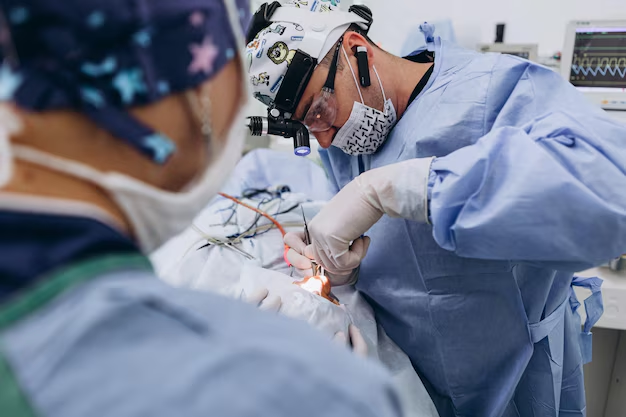The Evolution of Modern Cataract Surgery: When and How It Began
In a world where medical advancements reshape lives daily, cataract surgery stands as a testament to the miracles of modern medicine. If you’re curious about when modern cataract surgery began—a journey that transforms lives by restoring sight—you're in the right place. This exploration will dive deep into the evolution, significance, and impact of this extraordinary procedure.
The Dawn of Cataract Surgery: A Historical Glimpse
Cataract surgery is not a recent phenomenon. Historical texts refer to early forms of cataract treatment dating back over two millennia. At that time, procedures were rudimentary and often risky, involving a technique known as "couching"—displacing the clouded lens away from the pupil. These ancient methods were far from refined, often leading to complications rather than solutions.
From Antiquity to the Renaissance
- Antiquity: As far back as 1000 BC, practitioners in India and Egypt attempted early cataract procedures. These were primitive and not always successful, but they laid the groundwork for future advancements.
- Renaissance Period: During the Renaissance, European doctors began to experiment with surgical instruments, which were rudimentary by today's standards. The common goal was to improve vision, but success rates were still limited.
The Birth of Modern Cataract Surgery
Modern cataract surgery as we know it began in the mid-20th century, influenced heavily by innovations in surgical techniques and anesthesia. A pivotal breakthrough was the development of extracapsular cataract extraction (ECCE), which replaced earlier methods that had been fraught with complications.
1. Introduction of Intraocular Lenses (IOLs)
One of the most revolutionary changes came with the introduction of intraocular lenses. Replacing the opaque lens with a synthetic one marked a turning point in cataract surgery:
- The 1940s and 1950s: Harold Ridley, a pioneering ophthalmologist, noticed that splintered glass from fighter plane cockpits didn't cause inflammation when embedded in pilots’ eyes. This observation led to the development of the first IOLs in the 1950s.
2. Advancements in Surgical Techniques
- Phacoemulsification: Developed by Charles Kelman in 1967, this technique involved using ultrasonic vibrations to emulsify the lens for easier removal. It transformed cataract surgery into a safer, more effective procedure with quicker recovery times.
- The Foldable Lens: Introduced in the 1980s, foldable IOLs allowed for smaller incisions, further enhancing recovery speed and reducing surgical risks.
Key Components of Modern Cataract Surgery
Understanding the process and components of modern cataract surgery helps demystify the procedure, offering insights into its success and popularity.
Preoperative Evaluation
Before surgery, a thorough eye examination is performed to assess the severity of cataracts and overall eye health. Measurement of eye length and corneal curvature is crucial for selecting the appropriate IOL.
Surgical Procedure
- Anesthesia: Usually involves local anesthesia; general anesthesia is rare for standard cases.
- Incision and Phacoemulsification: A small incision is made, through which ultrasonic energy is used to emulsify and remove the cataract.
- IOL Implantation: The foldable IOL is inserted through the same incision, where it unfolds and takes the place of the natural lens.
Postoperative Care
Recovery from cataract surgery is generally swift. Patients are often required to use prescribed eye drops to prevent infection and inflammation and attend follow-up visits to monitor healing.
The Impact of Modern Cataract Surgery
Modern cataract surgery is a routine, low-risk procedure that enhances the quality of life for millions. Here’s why:
- Enhanced Vision: The most immediate benefit is the dramatic improvement in vision clarity, often restoring sight to what it was decades prior.
- Quick Recovery: Patients can often resume normal activities within days.
- High Success Rates: Contemporary methods boast success rates over 95%, leading to high patient satisfaction.
Societal Implications
Cataract surgery not only transforms individual lives but also has broader societal benefits. By improving the vision of older adults, it enhances their independence, reduces fall risks, and enables continued productivity.
Future Directions in Cataract Surgery
The field of cataract surgery continues to evolve with emerging technologies and materials promising even more refined outcomes.
Innovations on the Horizon
- Femtosecond Laser Technology: This technology allows for more precise incisions, further enhancing safety and outcomes.
- Advanced IOL Designs: New lens designs aim to correct other vision issues simultaneously, such as astigmatism and presbyopia.
- Customization: With advancements in imaging technology, the future may see even more personalized surgeries tailored to each individual's unique ocular architecture.
Research and Development
Ongoing research into materials for IOLs and surgical techniques continues to push the boundaries of what is possible. The exploration of bioengineered lenses and nanotechnology could lead to even more groundbreaking advancements.
Summary: Key Takeaways for Modern Cataract Surgery 📝
- History and Evolution: From ancient couching methods to modern phacoemulsification, cataract surgery has dramatically progressed over centuries.
- Introduction of IOLs: IOLs revolutionized cataract surgery, beginning in the mid-20th century, offering a permanent solution to cataracts.
- Current Techniques: Procedures are minimally invasive, utilizing ultrasonic technology, leading to quick recoveries.
- Future Prospects: Technology continues to drive cataract surgery advancements, promising even more personalized and precise interventions.
Cataract surgery is a compelling example of how far medical science has come. From its rudimentary early forms to the high-tech procedures we see today, it's a journey of innovation and hope. As we look to the future, continued advancements promise to further enhance the lives of those affected by cataracts, providing clear vision and comfort. The quest for perfecting eye health remains unyielding, driven by a singular goal: clarity of sight for all.
